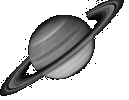
Celestron Forum Message | |
| Forums: |
Atm ·
Astrophotography ·
Blackholes ·
Blackholes2 ·
CCD ·
Celestron ·
Domes ·
Education
Eyepieces · Meade · Misc. · God and Science · SETI · Software · UFO · XEphem |

 |
|
 |
||||
|
|
||||||
Be the first pioneers to continue the Astronomy Discussions at our new Astronomy meeting place... The Space and Astronomy Agora |
| The General Rule
Forum List | Follow Ups | Post Message | Back to Thread Topics | In Response To Posted by Bob Sal on December 31, 2001 19:43:45 UTC |
The general rule for magnification limit is 50x the aperture. So for a 4 1/2 scope about 250x is your limit. Now that means on the clearest stillest of nights you may be able to focus the moon and planets at 250x. Most nights you will use much less and even less for deep sky objects. I have a 12" scope with focal length 3050 and view most objects between 75x and 220x even the planets. On a real clear night I go to 380x for the plaents and some planetary nebulas. Mostly I stay with the 22mm eyepiece at 136x. Remember, it's not about magnification. It's about light gathering power. Keep to your larger eyepieces for most objects and you should be OK. With my 80MM (3.1") refractor focal length 910 I mostly used the 32MM at 28x for the best images. I used a 17MM at 50x for a closer look. The Moon was the only thing that really looked much better with more magnification. As far as you saying the planets look the same size for all eyepieces, that can't be right unless you are expecting a real big change. For example Jupiter looks like small pea at 76x. At 218x it looks like a small marble. It never fills the entire field, not even close.
|
|
| Additional Information |
|---|
| About Astronomy Net | Advertise on Astronomy Net | Contact & Comments | Privacy Policy |
|
Unless otherwise specified, web site content Copyright 1994-2025 John Huggins All Rights Reserved Forum posts are Copyright their authors as specified in the heading above the post. "dbHTML," "AstroGuide," "ASTRONOMY.NET" & "VA.NET" are trademarks of John Huggins |